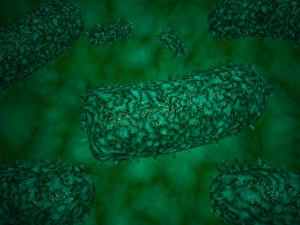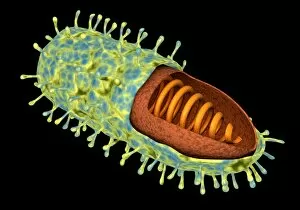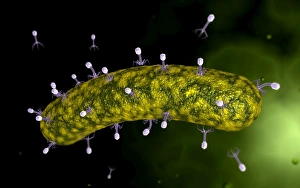Rod Shape Collection
"Unveiling the Intricate World of Rod-Shaped Microorganisms: From Bacteriophages to Bacillus Bacteria" Exploring the Hidden Universe
All Professionally Made to Order for Quick Shipping
"Unveiling the Intricate World of Rod-Shaped Microorganisms: From Bacteriophages to Bacillus Bacteria" Exploring the Hidden Universe: Captivating artwork showcases the diverse rod-shaped forms of microorganisms like bacteriophages and Coxiella burnetii. Unmasking Rabies Virus: Stylized images reveal the unique rod shape of rabies virus particles, offering a glimpse into their menacing nature. Battling Back with Antibodies: Conceptual image portrays an antibody attaching and killing bacteria, highlighting how these rods can be neutralized. Telomeres - Guardians of Chromosomes: A conceptual image illustrates telomeres, crucial structures that protect our genetic material from degradation in rod-shaped organisms. The Mighty Bacillus Genus: Delve into the world of bacillus bacteria through microscopic views, showcasing their distinctive rod-like appearance and diversity. Listeria Monocytogenes Under Scrutiny: Witness a microscopic view revealing the fascinating intricacies of Listeria monocytogenes' elongated form associated with foodborne illnesses. Borrelia burgdorferi's Stealthy Presence Exposed: Microscopic view captures a group of these slender rods responsible for causing Lyme disease, unraveling their hidden impact on human health. Peering Into Nature's Tiniest Architects: Mesmerizing microscopic view unveils various rod-shaped bacteria thriving in different environments worldwide – truly awe-inspiring. Pneumonia's Menace Magnified: Dive into a microscopic view exposing bacterial pneumonia's relentless attack on lung tissue, emphasizing its distinctively shaped culprits. In this captivating journey through artistry and science, we uncover the remarkable world inhabited by an array of intriguing rod-shaped microorganisms – each holding secrets waiting to be unraveled.
































